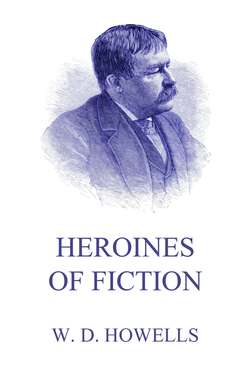Читать книгу Heroines Of Fiction - William Dean Howells - Страница 8
IV
ОглавлениеIt was the age of moral sentiments, and to have them at hand was the sovereignest thing against temptation from without and within. Heroines used to express them whenever the least danger threatened, and sometimes when they were in perfect safety. Under instruction of the good Samuel Richardson they sought the welfare of themselves, their lovers, and their correspondents in formularies prescribing the virtues for every exigency, and praising right conduct with a constancy which ought to have availed rather more promptly than it did. But neither of the girls in "The Vicar of Wakefield" is very profuse of them, and this marks either a lapsing faith in their efficacy, or a rising art in the novelist. Goldsmith, at any rate, confines the precepts and reflections to the father of his heroines, as he might fitly do in the case of the supposed narrator; Richardson, or rather the epistolary form of his novels, obliges his heroines to make them. Yet he was a great master, and, in spite of his preaching, a great artist. He was a man of a mighty middle-class conscience, and in an age not so corrupt as some former ages, but still of abominable social usages, he could not withhold the protest of a righteous soul, though he risked rendering a little tedious the interesting girls who uttered it for him.
He was blamed for portraying facts which were not so edifying as the morals to be drawn from them; and this may have been why he made his heroines so didactic. Somehow he had to trim the balance, and if the faithful portraiture of vice involved danger of contamination to the reader, virtue must be the more explicit and prodigal of its prophylactics and antidotes. His excess in both directions was corrected by the wiser art if not the purer instinct of the group of great women novelists who inherited his moral ideals and refined upon his materials and methods. Society had perhaps not grown much less licentious when Fanny Burney and Maria Edgeworth and Jane Austen began to write, but it was growing less openly licentious, and it might be studied in pictures less alarming to propriety, if not to innocence.
These women, who fixed the ideal of the Anglo-Saxon heroines, wrote at the close of the last century and the beginning of this, some thirty years after the masterpieces of Richardson appeared, and fifteen or twenty years after "The Vicar of Wakefield" imparted to all Europe the conception of a more exquisite fiction. In some sort Richardson served them as a model, and Goldsmith as an inspiration, but it was they who characterized the modern Anglo-Saxon novel which these masters had perhaps invented. The most beautiful, the most consoling of all the arts owes its universal acceptance among us, its opportunity of pleasing and helping readers of every age and sex, to this group of high-souled women. They forever dedicated it to decency; as women they were faithful to their charge of the chaste mind; and as artists they taught the reading world to be in love with the sort of heroines who knew how not only to win the wandering hearts of men, hut to keep their homes pure and inviolable. They imagined the heroine who was above all a Nice Girl; who still remains the ideal of our fiction; to whom it returns with a final constancy, after whatever aberration; so that probably if a composite photograph of the best heroines of our day could be made, it would look so much like a composite miniature of their great-great-grandmothers in the novels of these authors that the two could not well be told apart.
